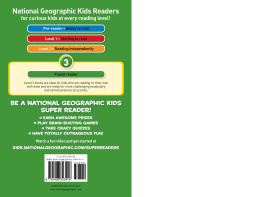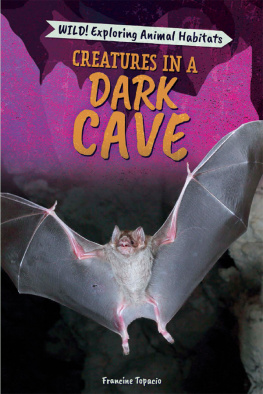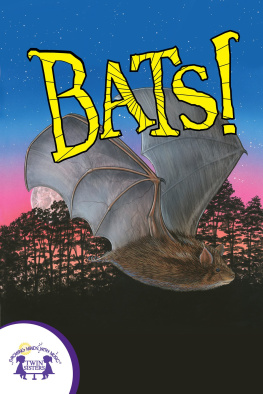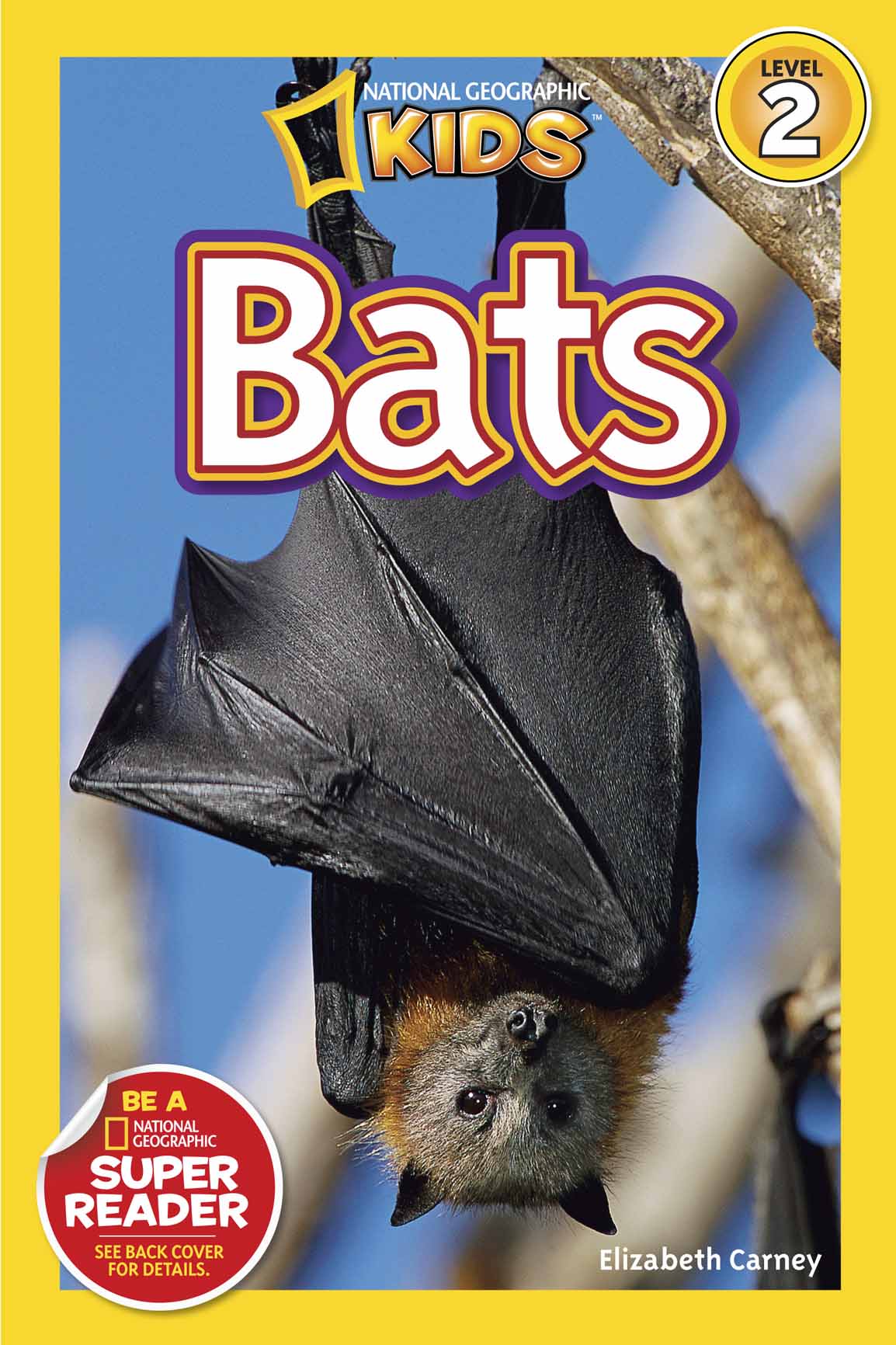Table of Contents
Guide

Children are naturally curious about the world around them, and
curiosity is a powerful motivation for reading. Information books
like this one allow you to feed your childrens interests and create
readers who not only can read but want to read!
Interesting informational books such as the National Geographic
Readers help your children learn more about the world we live
in, while helping them with reading comprehension. And stud
ies show that informational reading is critical to success as they
progress through school.
With the earliest levels in this series, you and your children will
want to read together. Even after your children can read alone,
theyll still enjoy reading time with you. Either way, keep in mind
that when parents show that reading is fun, rather than a set of
skills to be learned, their children achieve more, and learn more.
Sincerely,
Mariam Jean Dreher
Professor of Reading Education
University of Maryland, College Park

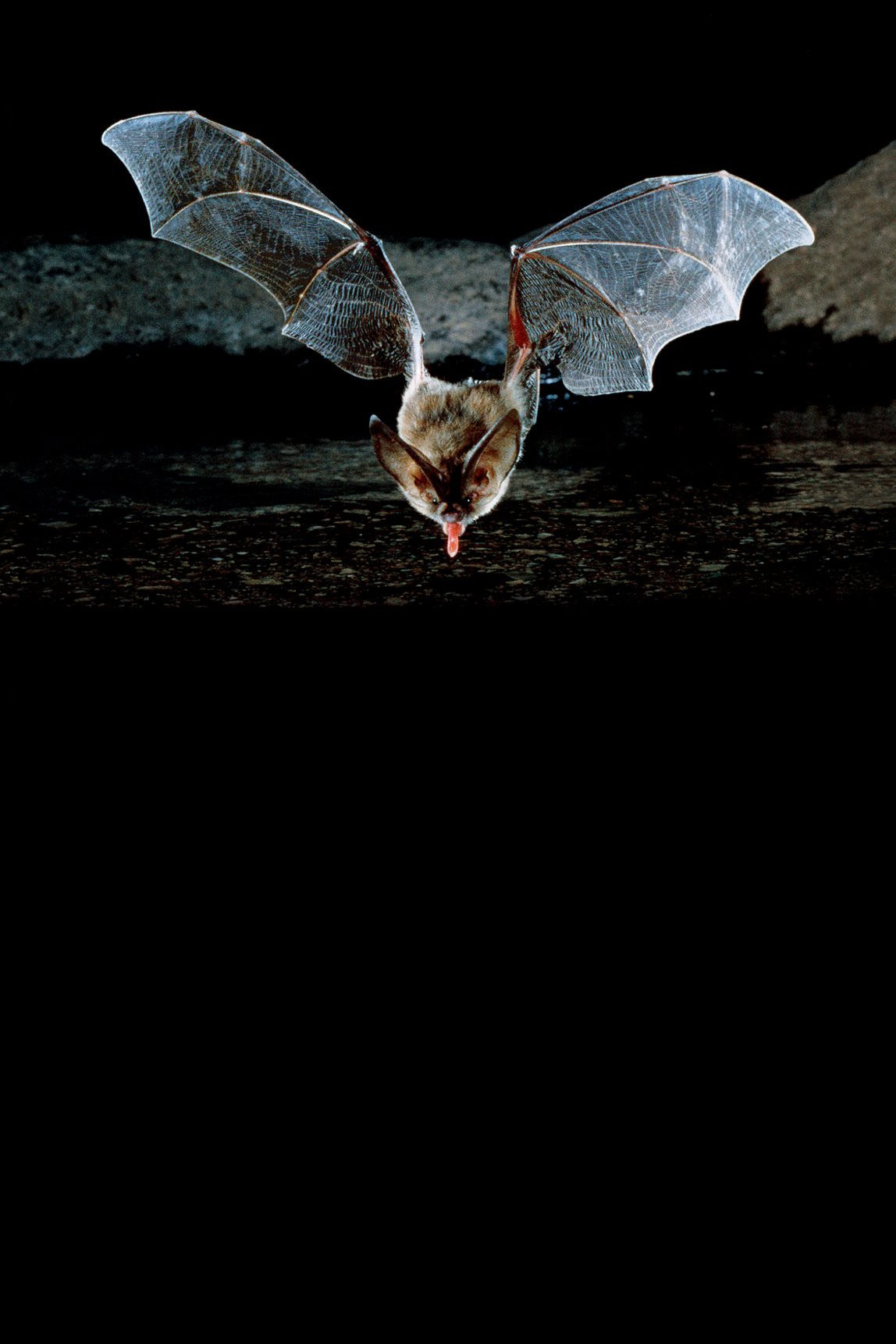
For Cheri and Raquel, and the
fond memories of our
nighttime mischief.
- E.C.
Text copyright 2010 National Geographic Society
Published by the National Geographic Society, Washington, D.C. 20036. All rights reserved.
Reproduction in whole or in part without written permission of the publisher is strictly prohibited.
Library of Congress Cataloging-in-Publication Data
Carney, Elizabeth, 1981
Bats / by Elizabeth Carney.
p. cm.
ISBN 978-1-4263-0710-2 (pbk. : alk. paper) -- ISBN 978-1-4263-0711-9 (library binding : alk. paper)
-- eISBN 978-1-4263-1302-8 (eBook)
1. Bats--Juvenile literature. I. Title.
QL737.C5C348 2010
599.4--dc22
2010011636
Cover, Theo Allofs; 1, Martin Withers/ FLPA/ Minden Pictures/ NationalGeographicStock.com; 2, Merlin D. Tuttle, Bat Conservation
International; 5, cbimages/ Alamy; 6, Norbert Wu/ Minden Pictures/ NationalGeographicStock.com; 8, Michael Lynch/ Alamy;
9, Carol Farneti Foster/ Getty Images; 10, Tim Laman/ NationalGeographicStock.com; 12, Mark Carwardine/ naturepl.com; 13, Eric
Baccega/ naturepl.com; 14, Victor Habbick Visions/ Photo Researchers, Inc.; 16 (top), ImageState/ Alamy; 16 (bottom), Dr. Morley
Read/ Shutterstock; 17 (top), Barry Mansell/ naturepl.com; 17 (bottom), Nina Leen/ Time & Life Pictures Creative/ Getty Images; 19,
Theo Allofs/ The Image Bank/ Getty Images; 21, Tristan Savatier/ Flickr/ Getty Images; 22, WIN-Initiative/ Getty Images; 23, Dr. Merlin
D. Tuttle/ Bat Conservation International/ Photo Researchers, Inc.; 24, Newspix/ Rex USA; 26, Michael & Patricia Fogden/ Minden
Pictures/ NationalGeographicStock.com; 28, Ingo Arndt/ Foto Natura/ Minden Pictures/ /NationalGeographicStock.com; 29 (top),
Tom Uhlman/ Alamy; 29 (middle), Oxford Scientific/ Photolibrary/ Getty Images; 29 (bottom), Nick Gordon/ ardea.com; 30, Tim
Laman/ NationalGeographicStock.com; 30 (inset), Steve Downer/ ardea.com; 31 (top), Konrad Wothe/ Minden Pictures/
NationalGeographicStock.com; 31 (middle), Chris Howes/ Wild Places Photography/ Alamy; 31 (bottom), Hugo Willcox/ Foto Natura Minden
Pictures/ NationalGeographicStock.com; 2, (top, left) ; 32 (middle, left), Bob Stefko/ The Image Bank/ Getty Images; 32 (bottom,
left), Tim Laman/ NationalGeographicStock.com; 32 (top, right), Victor Habbick Visions/ Photo Researchers, Inc.; 32 (middle, right),
Michael & Patricia Fogden/ NationalGeographicStock.com; 32 (bottom, right), Steffen & Alexandra Sailer/ ardea.com.

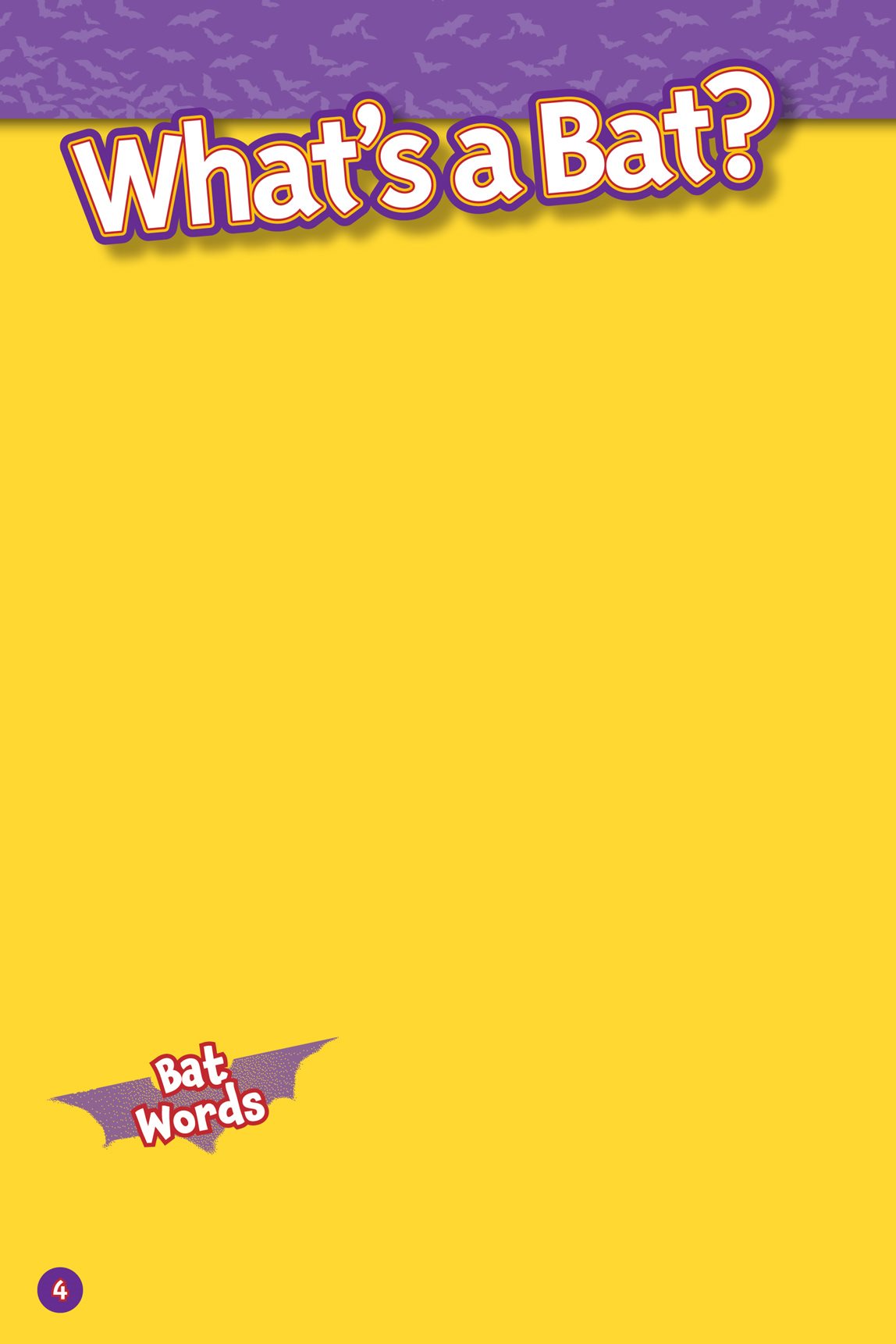
I sleep by day. I fly by night. I have no
feathers to aid my flight. What am I?
The answer is a bat! A bat is a
mammal. Mammals are animals that
nurse their young, have hair, and are
warm- blooded. Humans, dogs, and
whales are all mammals. But bats have
a special ability. They can fly!
MAMMAL:A warm- blooded animal that
drinks its mothers milk, has a backbone,
and has hair
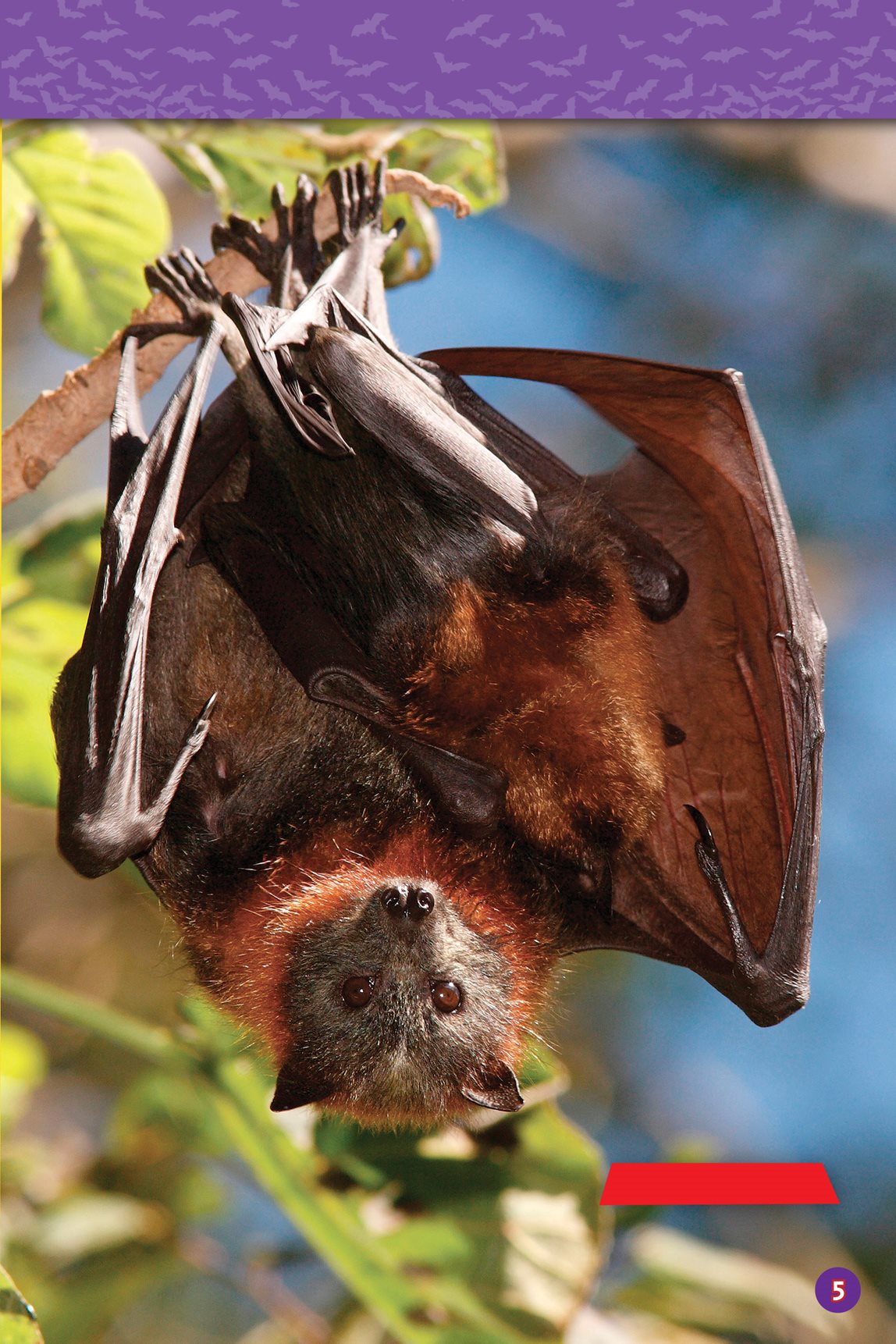
Flying fox bats
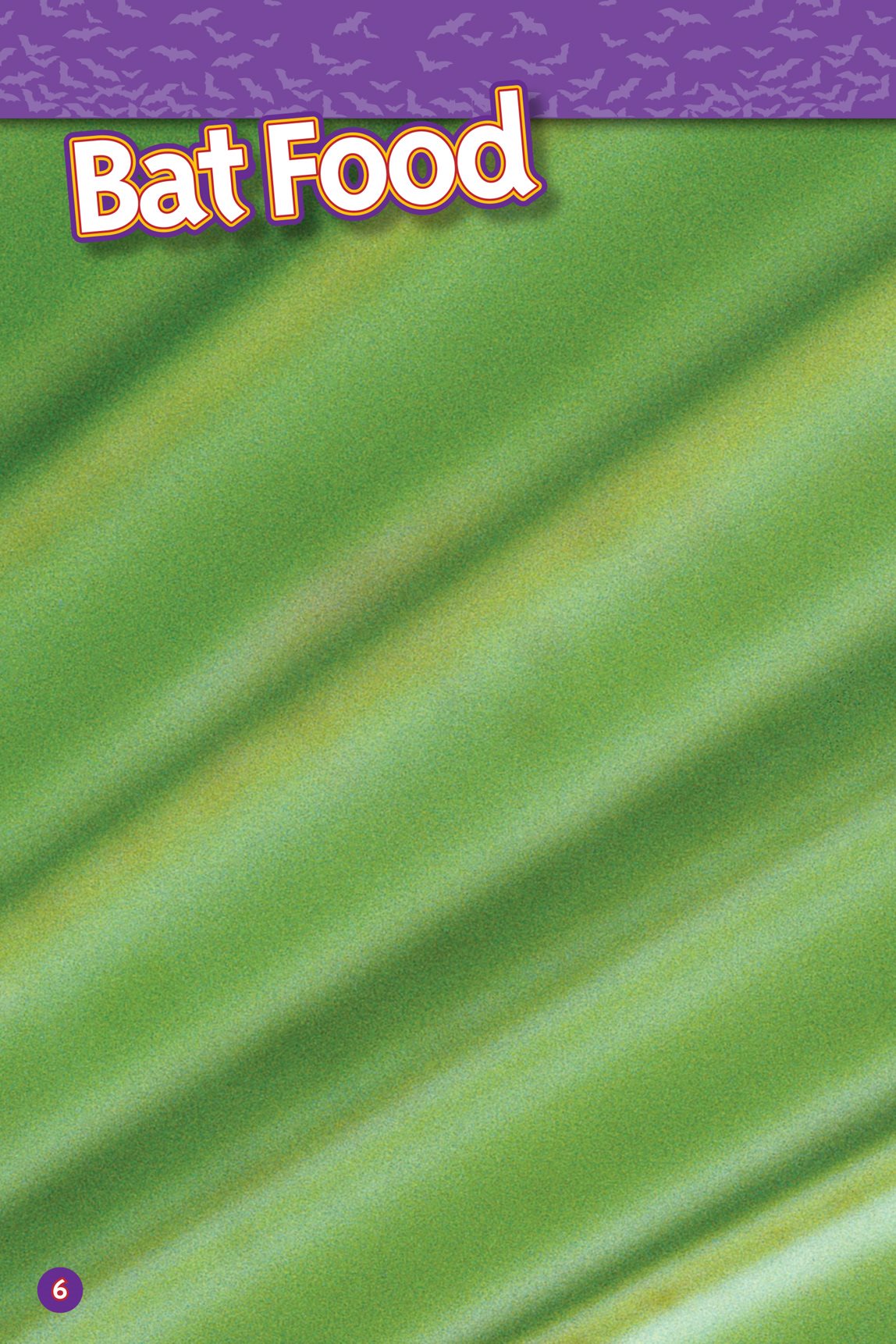
There are about 1,200 types of
bats in the world. Most of them eat
insects. Insect- eating bats are usually
small in size.
There are more than types of
fruit bats. These bats are usually
larger and search for sweet fruits
and other plants.
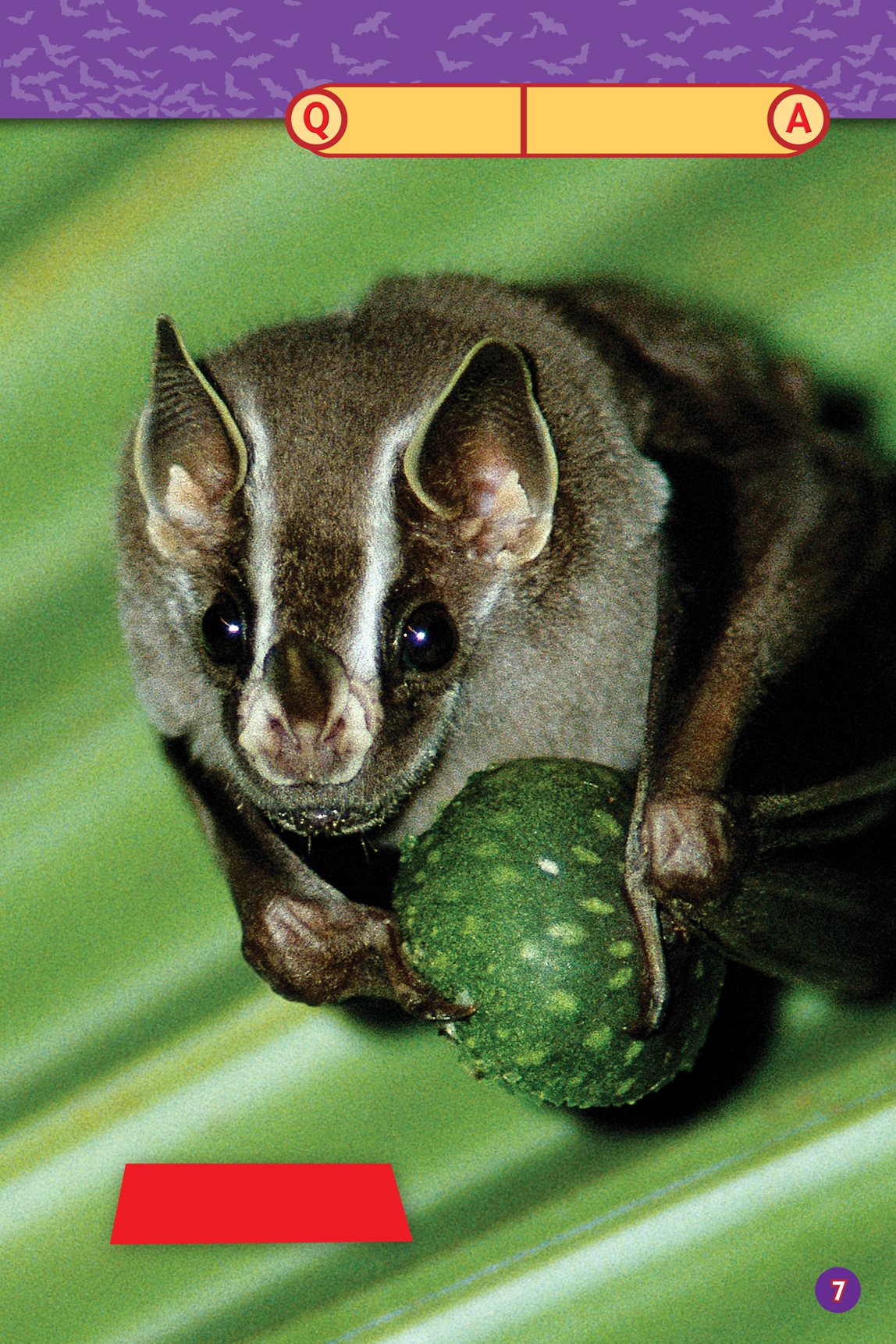
Why dont bats
live alone?
They prefer to hang
out with their friends.
Silky short-tailed
bat feeding
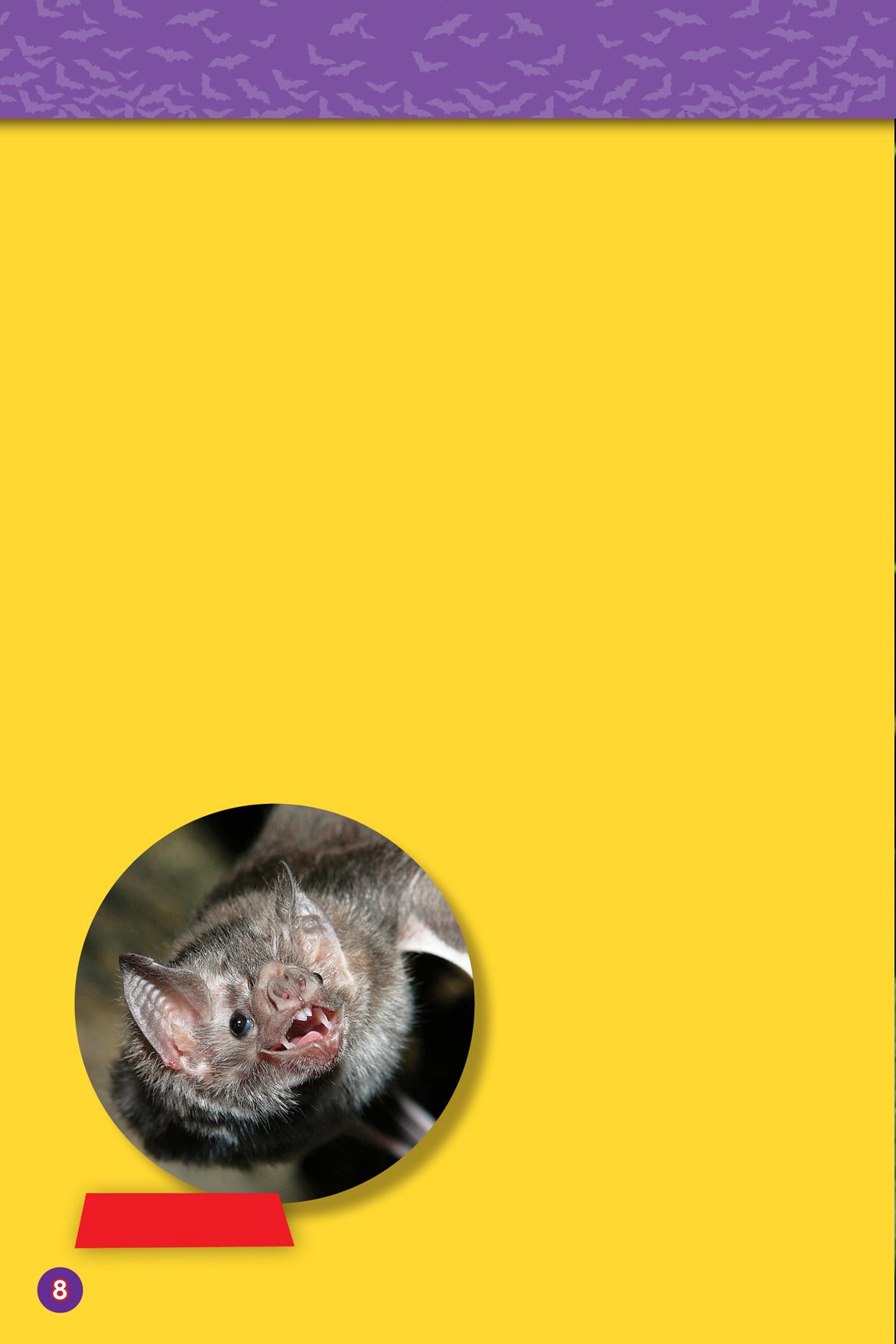
A few bats hunt for larger prey,
such as frogs, birds, or mice.
Some people think all bats suck
your blood. This is not true.
Only three kinds of bats drink
blood. This group is known as
vampire bats. They mostly feed on
the blood of
animals like
cows and
deer not
humans.
Vampire bat
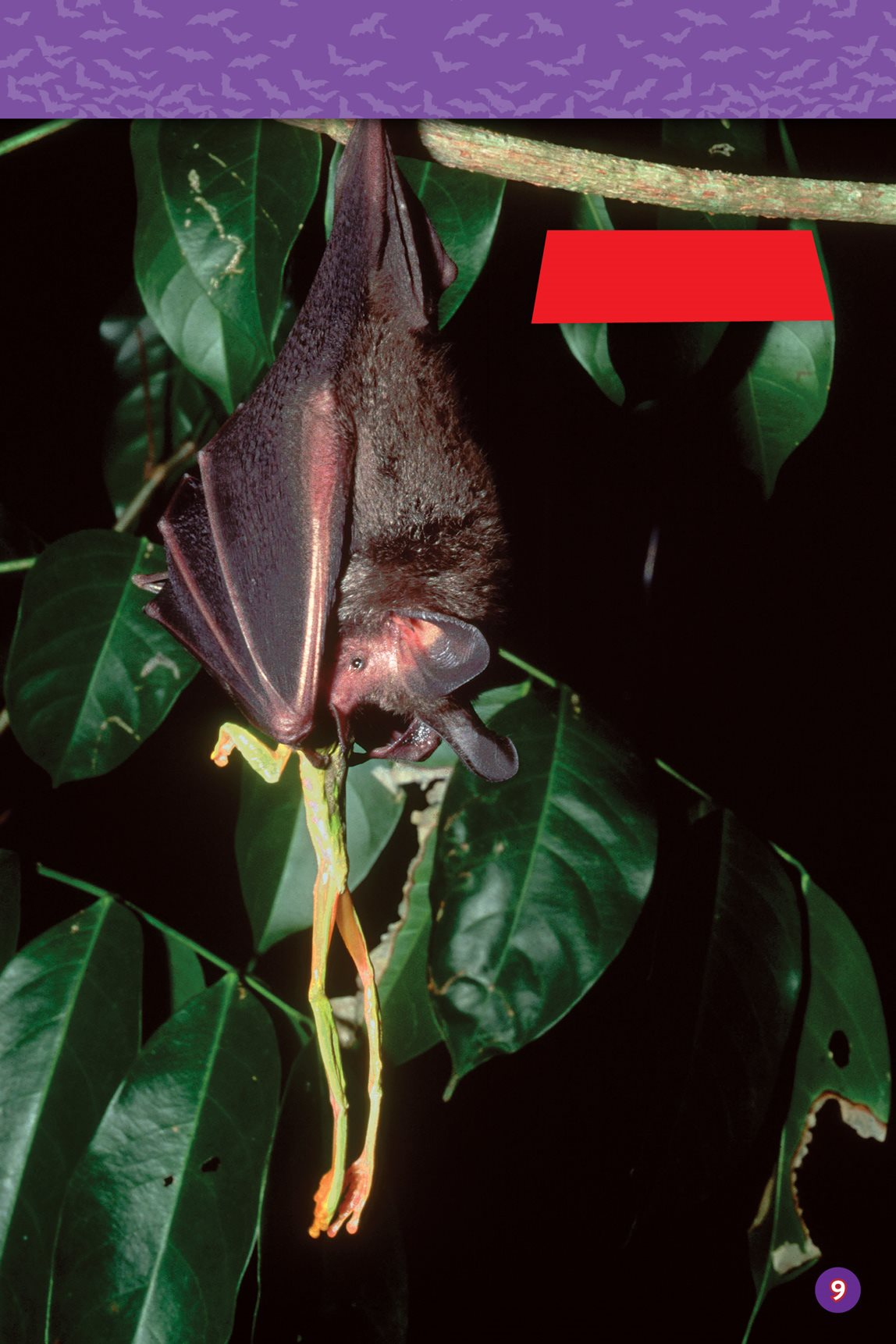
Fringed lip bat
eating a frog
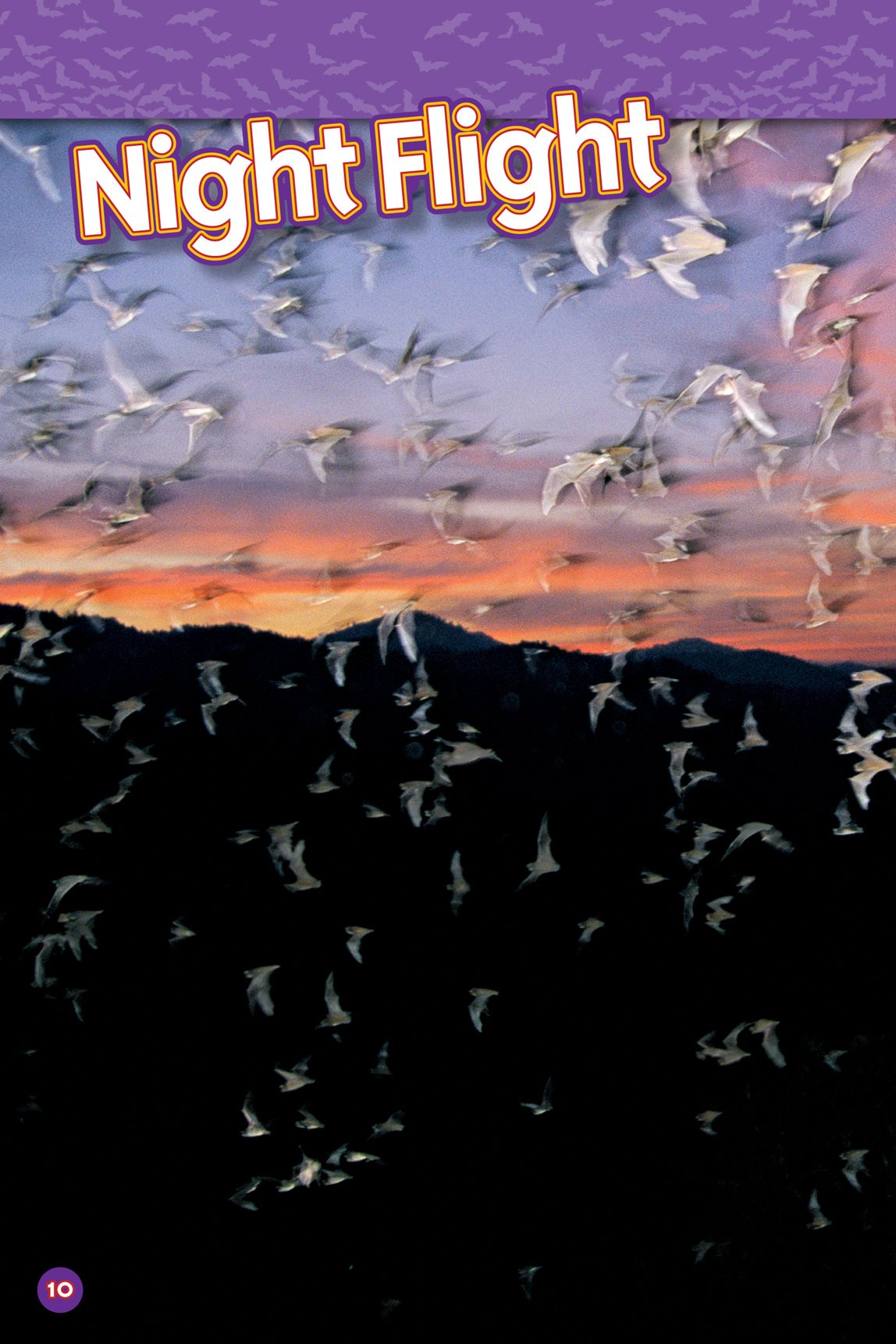
Did you know that while youre
fast asleep, bats are busy filling their
bellies? Bats are nocturnal, meaning
theyre active at night. This way
of life has many advantages for a
bat. Insect- eating bats often feast
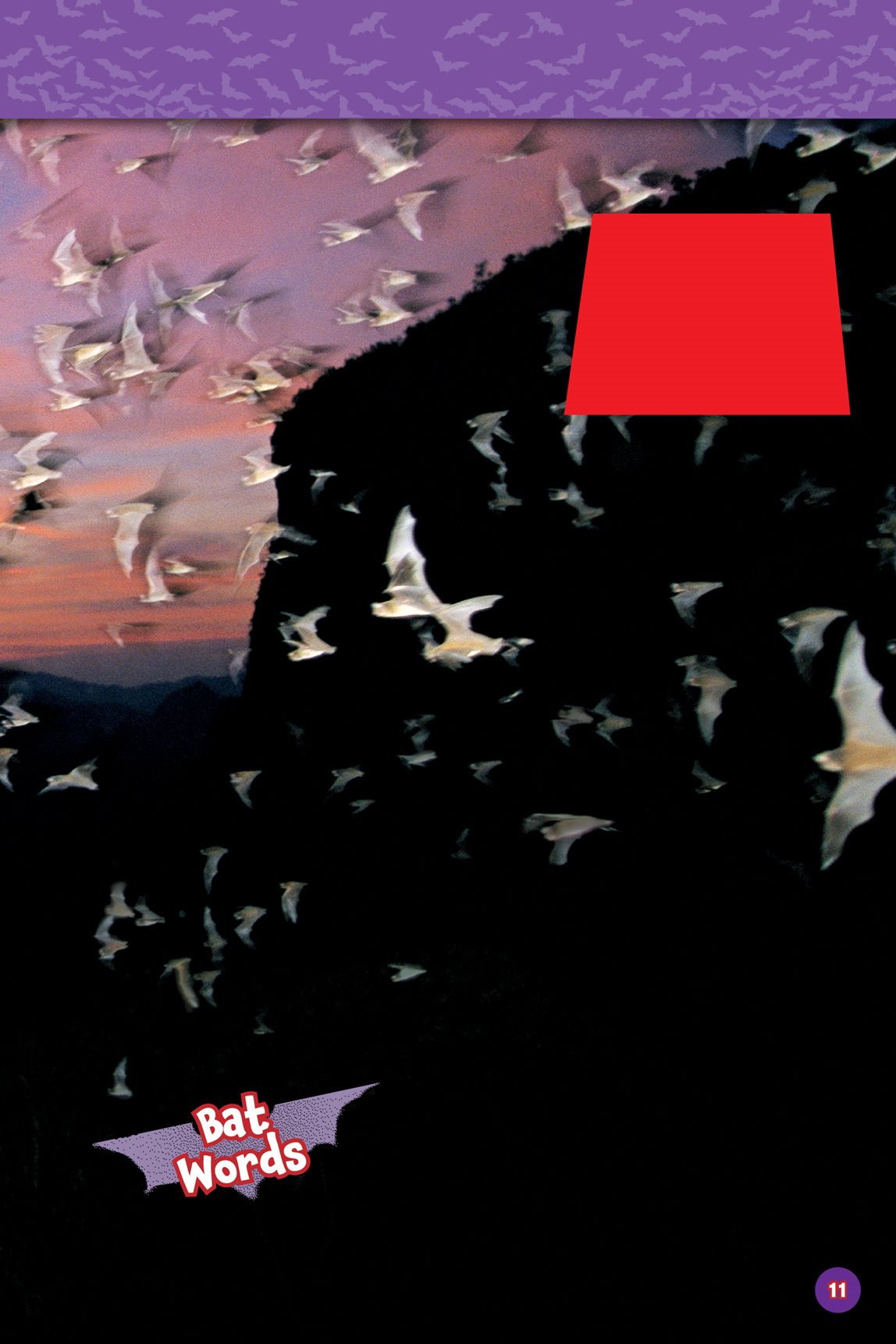
on bugs that come out after dark.
Pollen- and nectar- eating bats might
feed on plants that only open at


